What bike rack should you Get? The Best Bike Racks for Cars & SUVs
Learn everything you need to know about bike rack types including platform hitch racks, vertical hanging racks, roof bike racks, and more!
There are a lot of different types of bike racks to choose from, so how do you know which one is right for you? What are the best bike racks for cars and SUVs?
After years of trial and error, I’ve found that while there is no ‘perfect’ bike rack (just like there is no ‘perfect’ bike), there are some great options to choose from and each has its own benefits and drawbacks.
In this blog post, I’ll outline the different types of bike racks available and help you figure out which one is best for your car or SUV.
Types of bike racks for cars & SUV’s
There are four main types of bike racks to consider when shopping around for your car or SUV:
- Rear hitch bike racks
- Trunk-mounted bike racks
- Roof racks
- Spare tire racks
Have a truck instead? Head over to my posts on bike rack options for truck beds and the best tailgate bike pads for your truck.
1. Hitch bike racks
Rear hitch bike racks are the most popular type of bike rack. They attach to your car’s rear trailer hitch and can carry two to four bikes. Typically, rear hitch racks are the most stable, easiest to use, most durable, and also the most expensive.
Hitch bike racks come in three different styles and each has its own pros and cons.
PRO TIP
Hitch-mounted bike racks can come in two sizes: 1.25″ and 2″. Make sure you know what size your rear hitch receiver is before buying your hitch rack.
Platform Hitch Racks
The first type of rear hitch rack is the platform hitch rack. With platform racks, the bike tires sit in trays or buckets. The front wheel is typically anchored by an extendable arm and the rear tire is typically secured by a strap. Of course, this depends on the rack as there are several different styles.
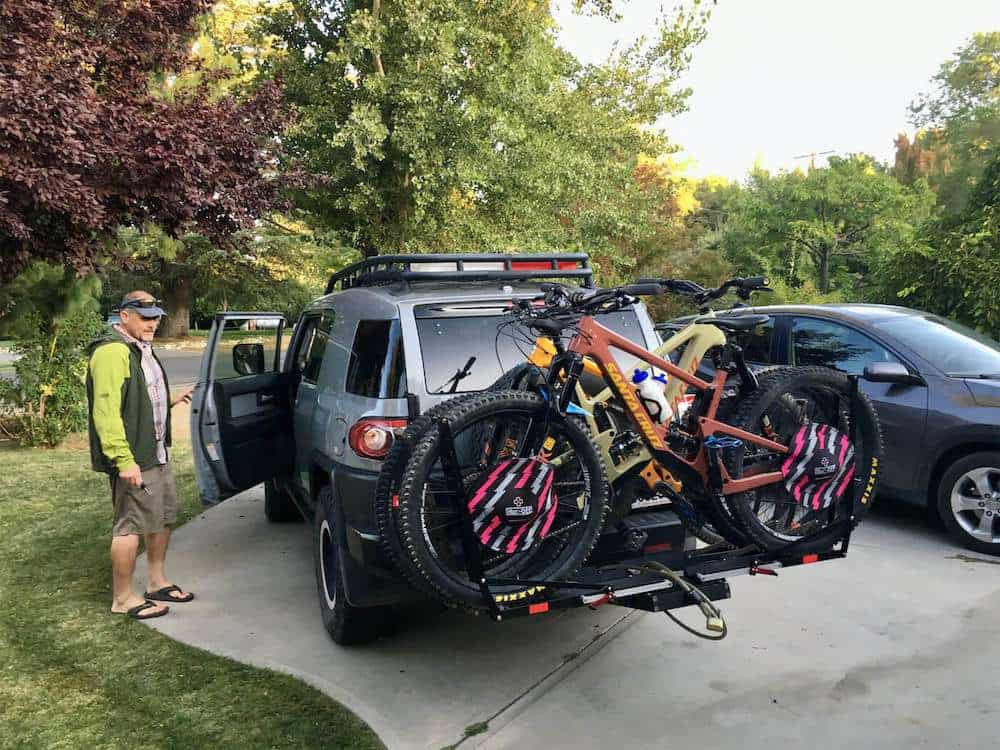
Platform Hitch Rack Pros
Platform Hitch Rack cons
Most platform racks can accommodate two bikes, but there are 4-bike platform racks and some come with the option of adding/removing additional trays. Platform racks are great for all types of bikes from road bikes, mountain bikes, e-bikes (certain styles), and kid’s bikes. Some are even designed to swing away or tilt toward so you can access the back of your car or SUV.
One of the downsides to platform hitch racks, though, is that the extendable arm can rub against the fork or frame, causing cosmetic damage.
Platform hitch racks are also more expensive than other types of hitch racks, but they’re worth the investment if you ride a lot and plan on traveling with your bikes.
Best platform hitch rack options
Vertical hanging hitch racks
Vertical hanging hitch racks support bikes by a central mast. Some bikes hang from the front wheel and other racks are designed for bikes to hang from the fork crown.
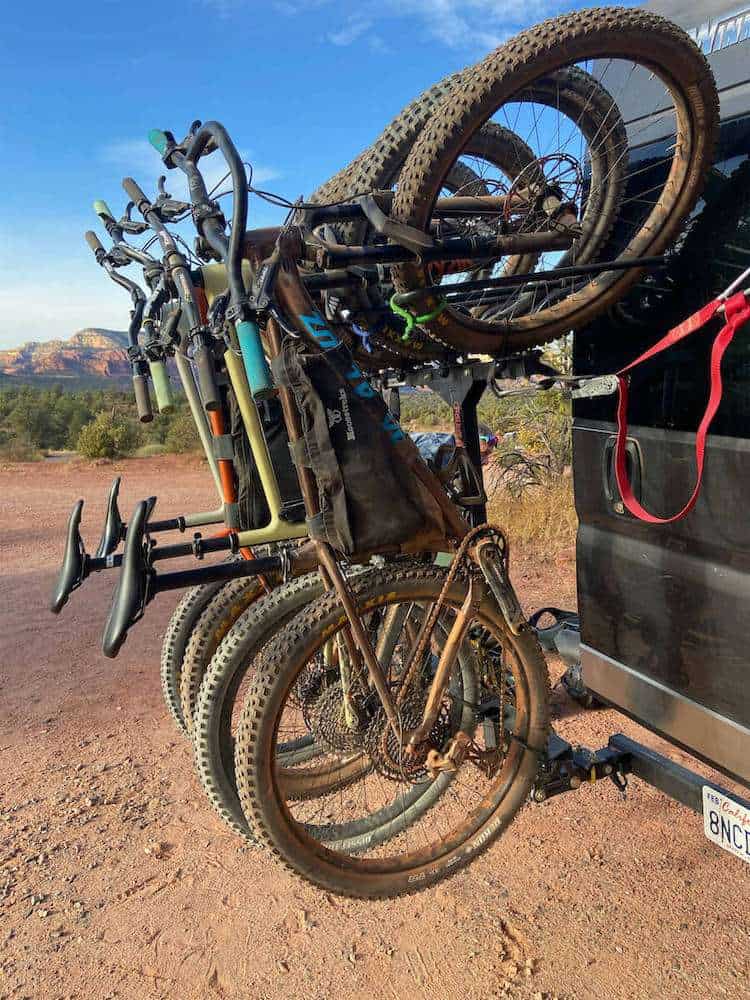
Vertical Hanging Rack Pros
Vertical Hanging Rack cons
Vertical hanging hitch racks can typically accommodate more bikes than platform racks, but they aren’t great for most bikes outside of mountain bikes. For example, e-bikes, road bikes, and kid’s bikes are probably not going to work with hanging racks.
Another thing to consider is that if you’re planning on hauling 5-6 bikes on a hanging rack, you most likely won’t be able to do this with a 1.25” receiver.
Best vertical hanging hitch rack options
North Shore was one of the original hanging bike rack manufacturers, but recently there have been a few other options popping up over the past few years.
Note: We had a Recon vertical hanging rack that we took across the country and back twice and used on many shorter trips. Ultimately, we found that this rack did not live up to our standards due to several of the welded metal baskets breaking and a few other issues we’ve had with it. That being said, Recon Racks recently sold to 1UP USA and the design has been completely updated.
Frame supported hitch racks
The last type of hitch bike rack is a frame-supported rack. I don’t love these racks because they’re not as stable as platform or hanging racks and there is a much higher risk of bikes knocking against each other and getting damaged in transit.
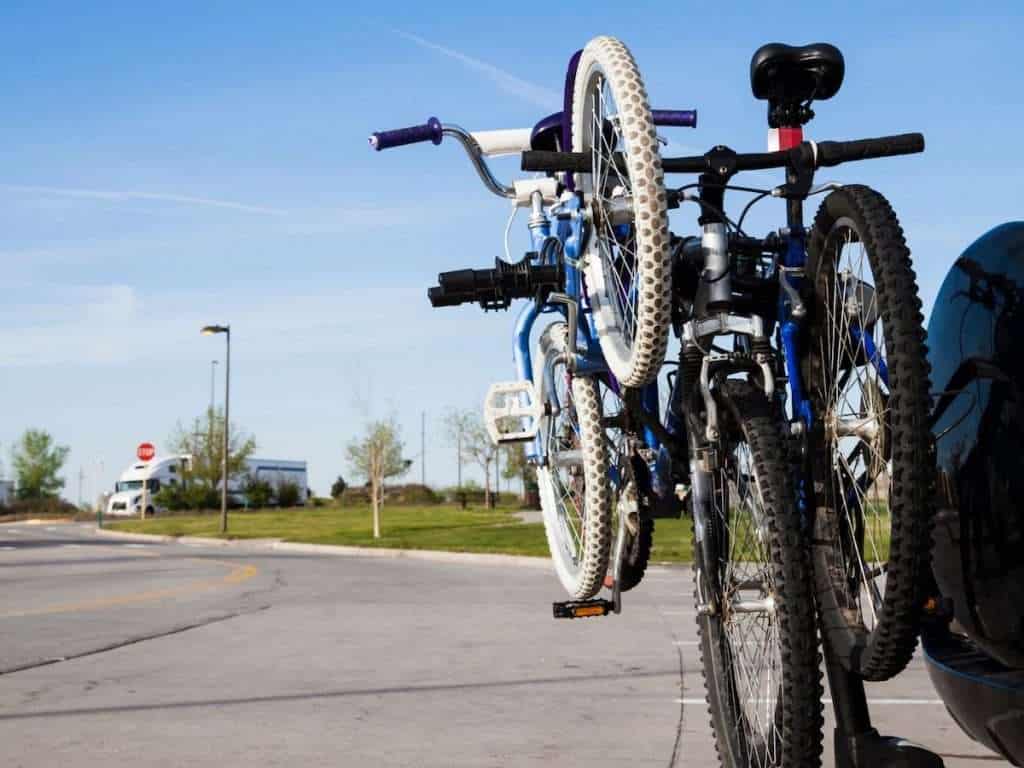
Frame Supported Rack Pros
Frame Supported Rack cons
Frame-supported racks support bikes by their frames, so there is a much greater risk of rubbing and wear.
That being said, these racks are more budget-friendly than platform or hanging racks and if you’re only driving short distances on nicely paved roads they could be a good option. I do recommend only using this type of bike rack for one or two bikes to minimize contact.
Best frame-supported hitch rack options
I don’t love frame-supported hitch racks, but if this is the best option for you, these two are my top choices.
2. Roof Bike Racks
Rooftop bike racks are exactly what they sound like – racks that attach to the top of your vehicle. Roof racks are great options for lighter bikes and/or cars that are low to the ground. They’re also good for when you need to tow a trailer or you don’t (or can’t) install a rear hitch.
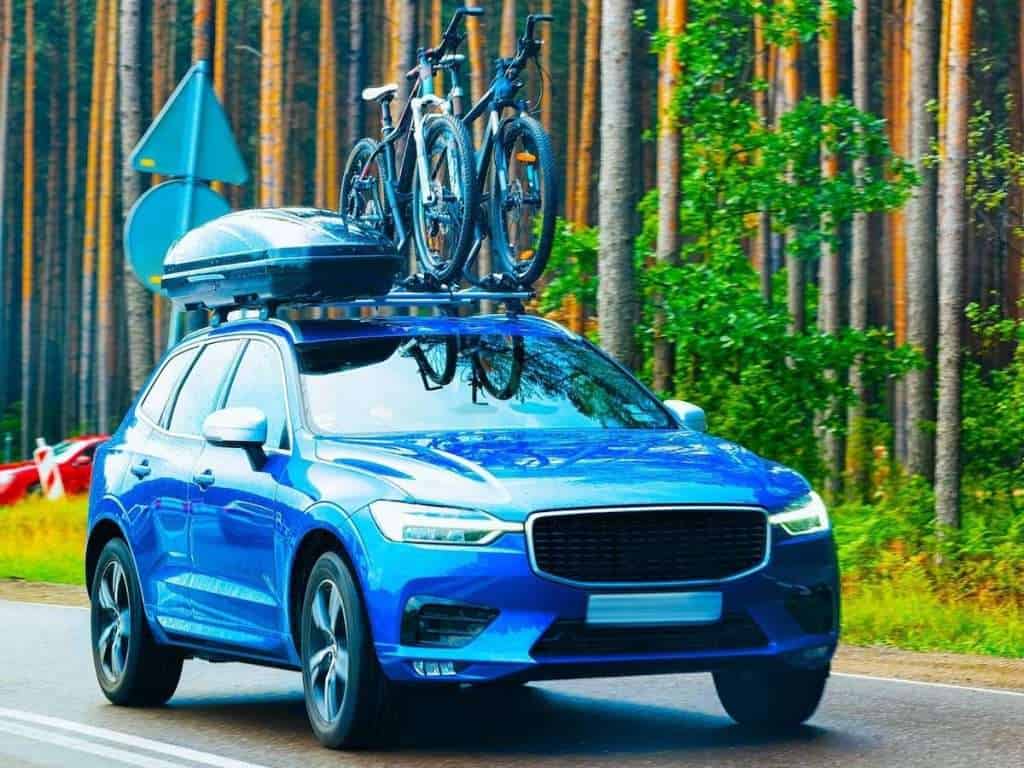
Roof Bike Rack Pros
Roof Bike Rack cons
If you don’t have a factory roof rack that came with your car, you will need to have load bars or crossbars installed. Also note that rooftop racks are usually sold individually, not in pairs so if you plan on transporting two bikes you’ll need to buy two roof racks.
There are two options for rooftop bike racks. The first is a rack where the front wheel stays on and the second requires the front wheel to be removed. Both have their pros and cons so be sure to really think about what would work best for your can and biking needs.
Best rooftop rack options
Here are a few top-of-the-market choices for platform hitch racks. I have the Thule T2 Classic.
3. Trunk Bike Racks
Trunk racks are the cheapest options for bike racks. They work via a strap and hook system on the rear of your car and they are typically easy to install and remove. They don’t require rooftop load bars or a rear hitch, which makes them appealing to a lot of people.
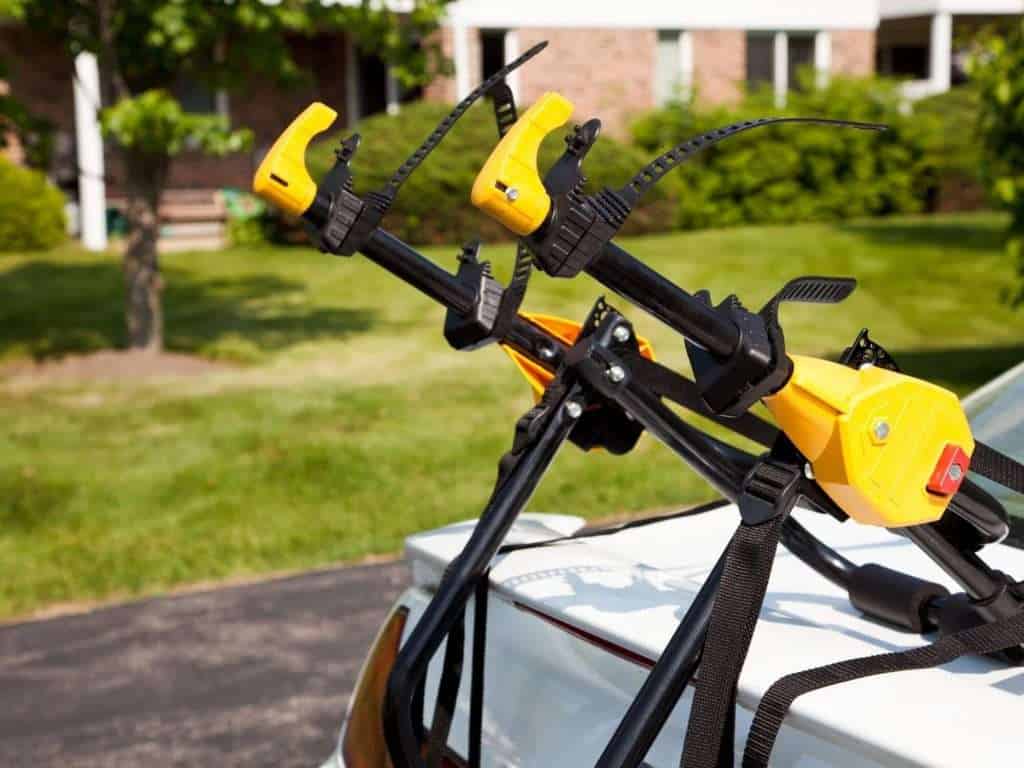
Trunk Bike Rack Pros
Trunk Bike Rack cons
Like the frame-mounted bike racks, however, trunk racks do not do a great job at keeping bikes separated, so you run the risk of having your bikes knock and rub against each other while in transit. As such, they’re really only a good option for two bikes max and for riders who aren’t traveling far and aren’t driving on bumpy, rough roads.
It’s also important to note that there is no way to open the rear of your vehicle when a trunk rack is loaded with bikes.
Best Trunk bike rack options
Here are a few top-of-the-market choices for platform hitch racks. I have the Thule T2 Classic.
4. Spare Tire Bike Racks
Spare tire racks are a niche category for niche bike rack needs. First off, your car must have an externally mounted spare tire (like a Jeep), and secondly, you’ll most likely be using your car hitch for something else like a trailer.
If neither scenario applies to you, just go with a hitch rack or rooftop bike rack.
Tips for choosing a bike rack
As you can see, there are a handful of different style bike racks on the market. Personally, I prefer hitch racks because I’m primarily a mountain biker and full-suspension bikes do best on platform-style racks or hanging racks. But there are other styles out there too.
Depending on what kind of bike you ride and what car you own, you may find that a roof rack or trunk rack better suits your needs.
Before you go out and purchase a bike rack, though, here are a few questions to ask yourself:
What kind of bike will you be using this rack to transport?
The type of bike(s) you ride will have a big factor in the type of rack you want. Mountain bikes do best on platform or hanging hitch racks while roof racks are popular for road bikes.
If you have a fat bike you’ll need to make sure the tire trays can accommodate wide tires and if you ride an e-bike you’ll need to be sure that you can lift it up to the height of the rack and that the rack can support its weight.
How many bikes will you be transporting?
Some bike racks can hold up to six bikes and other bike racks are only meant for a single bike. Think about who you will be riding with and whether you will be doing shuttled rides.
Hanging hitch racks can transport the most bikes while roof racks are usually sold for individual bikes.
An important thing to note: many platform hitch racks allow for additional trays to be added when needed. So if you normally only carry two bikes, but on occasion need to carry four, some platform bike racks offer add-on trays.
Does your car have (or can it accommodate) a hitch?
Many vehicles these days come fitted with a rear hitch receiver, but sometimes they don’t. Make sure you know whether your car has one or if it CAN be fitted with one. Some cars don’t have an after-market hitch option and in that case, you’ll be stuck looking at roof racks or trunk racks.
What size hitch do you have (or will you be getting)?
It’s important to note that there are two sizes for rear hitches: 1.25” and 2”. Some cars – like my Honda HR-V – only have one after-market hitch size option (1.25”).
The main difference between the two sizes is how much weight they can hold. Typically, a 1.25” hitch is perfectly fine for 2 mountain bikes. Make sure you read the weight limits for your hitch size and the rack that you are looking to purchase to make sure your hitch, rack, and bike(s) are all compatible.
What kind of travel will you be doing with your bike?
If you’re planning on just riding locally, you don’t need to think about this question too much. But if you’re planning on road-tripping with your bike, it’s wise to think about how your rack will affect your travels.
Will a roof rack prevent you from using your cargo box? How easily do you need to access the rear of your car? How many bikes do you need to carry on your rack? Do you need to tow a trailer? Sometimes hitch racks are a better option and other times roof racks are.
Trunk racks are rarely the answer for riders who plan on doing a lot of travel.
What is your budget?
Bike racks can range from $50 all the way up to hundreds of dollars and even into the thousands. How much do you want to spend on your rack? Take into account how much you will be using it and for what purpose.
Cheap racks can be great for transporting bikes to the bike path or weekend trips out of town while a more expensive rack is a great investment if you plan on using it frequently.
Will you be leaving my bike rack on permanently or do you need to remove it when not being used?
Hitch racks and rooftops racks are designed to be left on your vehicle for lengths of time. Of course, they can be removed (say for the off-season), but you won’t be wanting to remove them after every ride.
If you need a rack that can be taken off and on easily, you will probably want to consider a trunk rack.
Bike rack manufacturers
Like any other piece of gear you consider, there are a lot of different manufacturers that make bike racks. Here are a few of my go-to brands that make quality bike racks built to last:
- Küat (all bike rack types)
- Thule (all bike rack types)
- Yakima (all bike rack types)
- 1UP USA (platform hitch racks)
- Northshore Racks (vertical hanging racks)
- Rocky Mounts (platform hitch racks & roof bike racks)
- Saris (trunk bike racks)
What questions do you still have about the different types of bike racks? Do you have a bike rack that you already love? What is it and what do you like/not like about it?

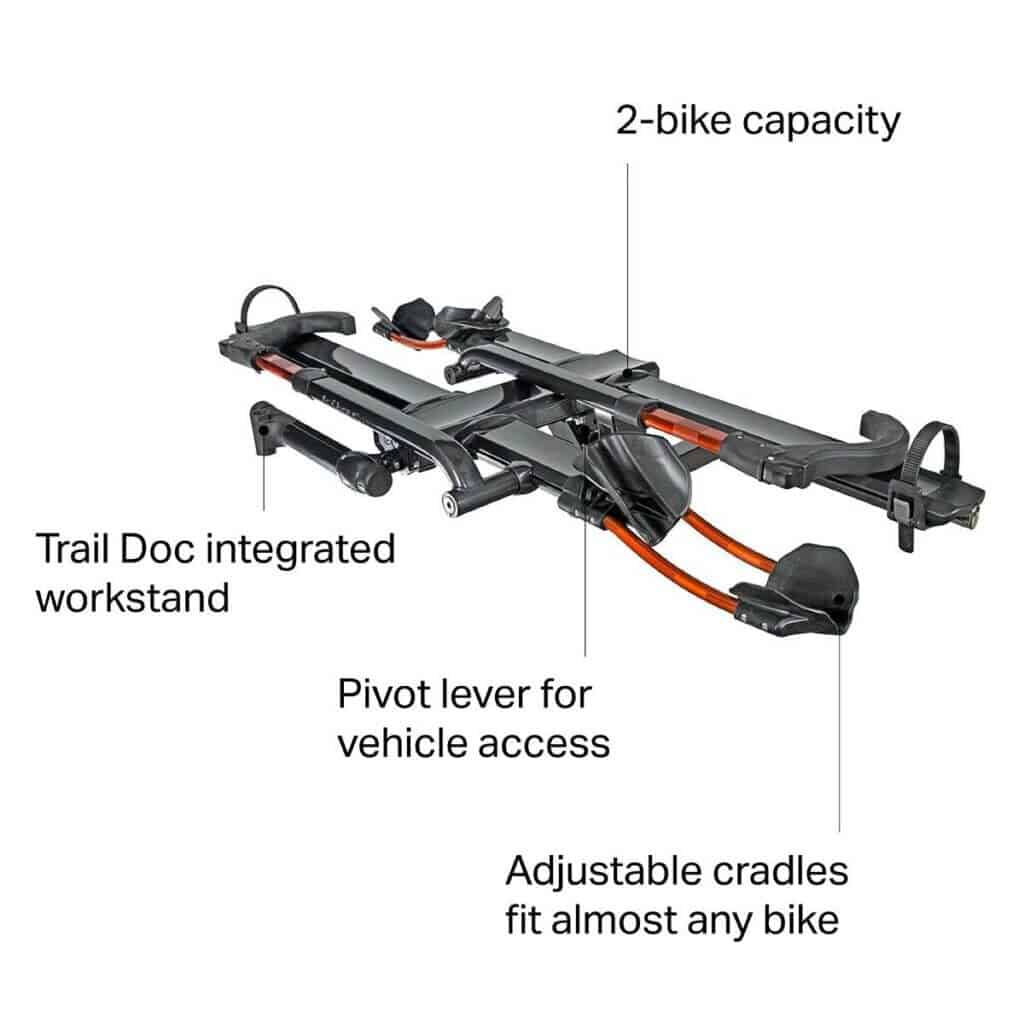
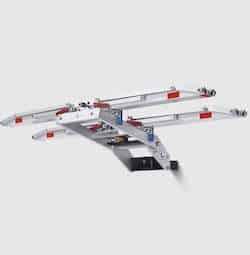
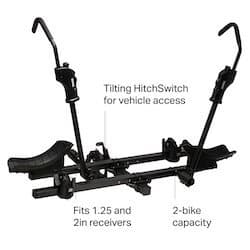
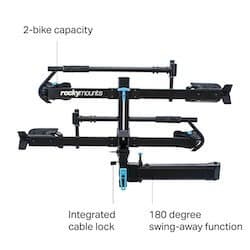
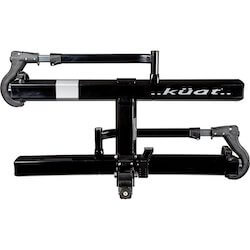
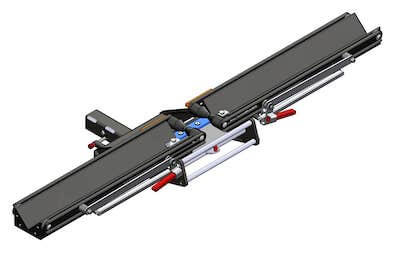
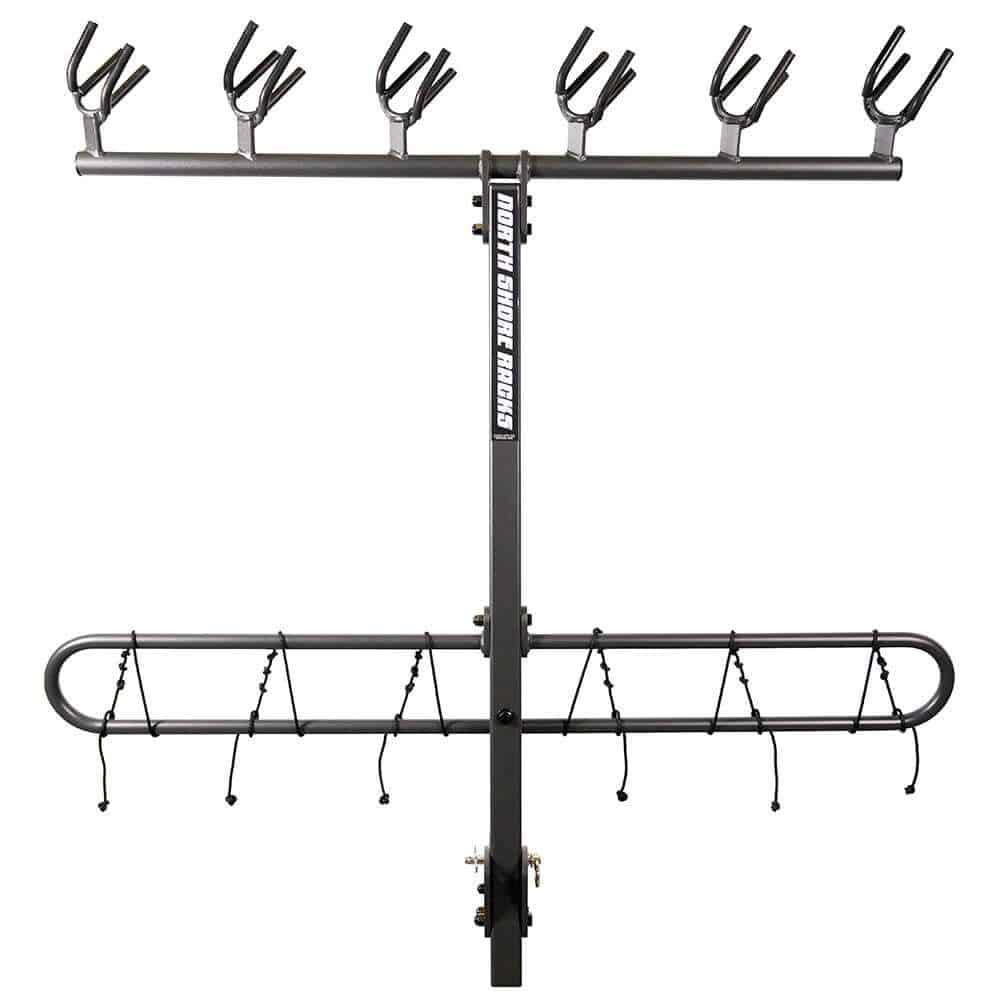
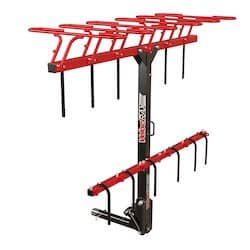

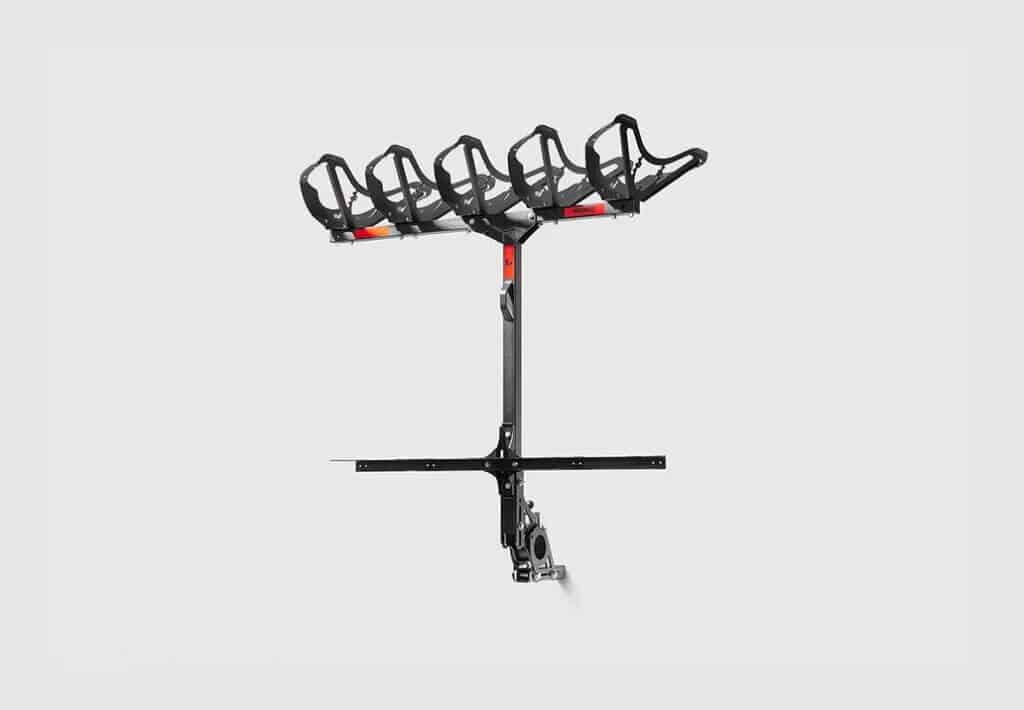
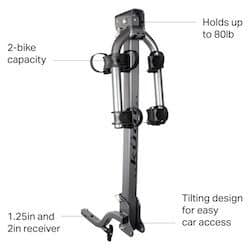
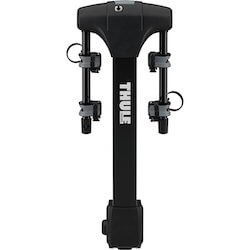
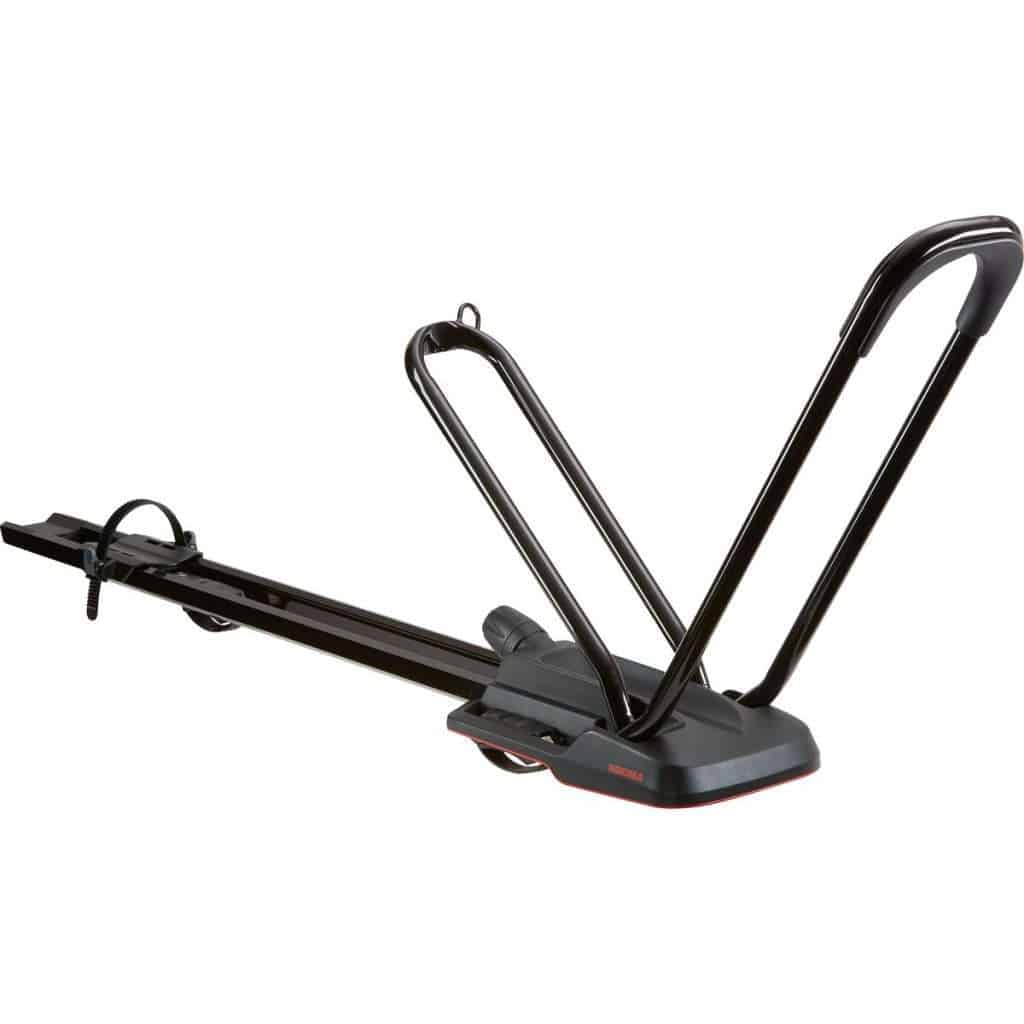
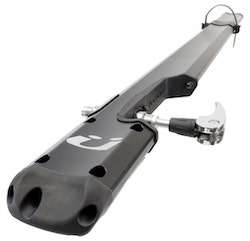

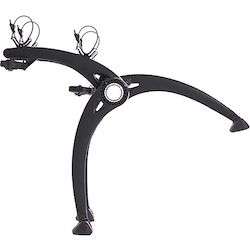
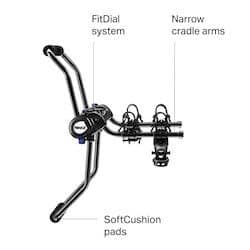
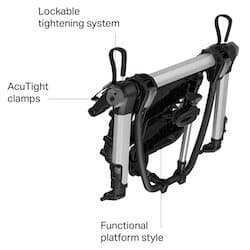
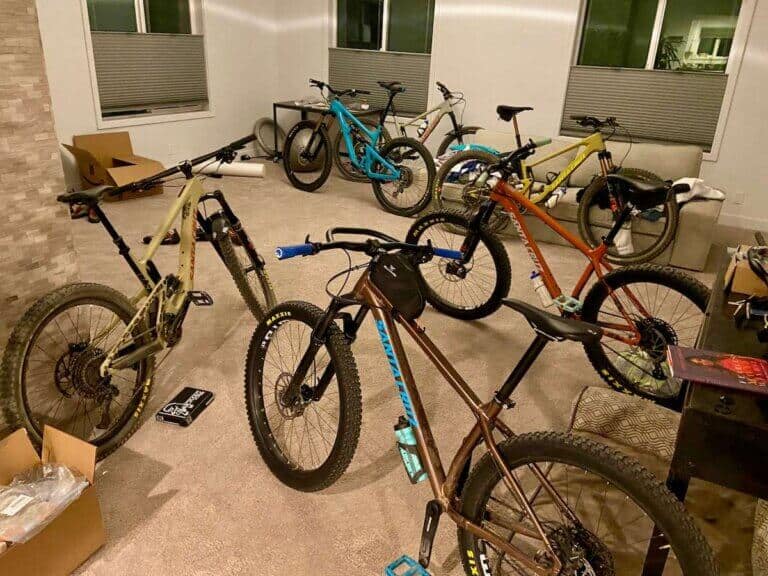
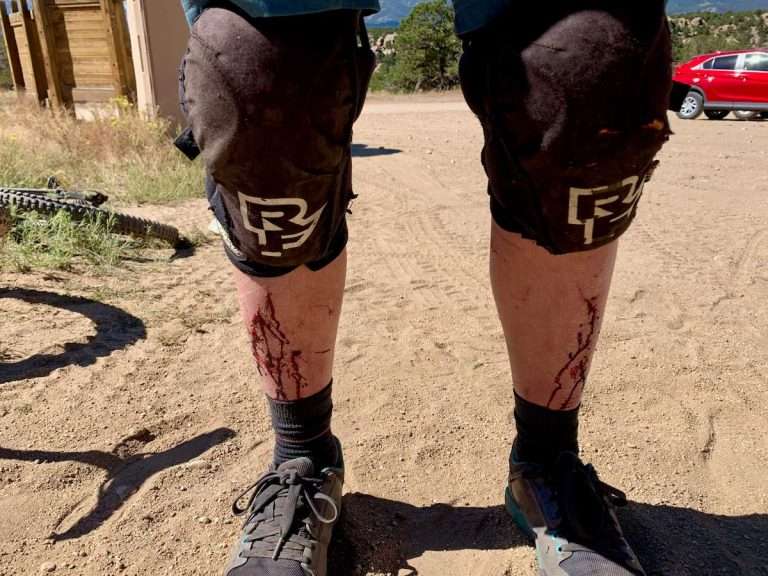
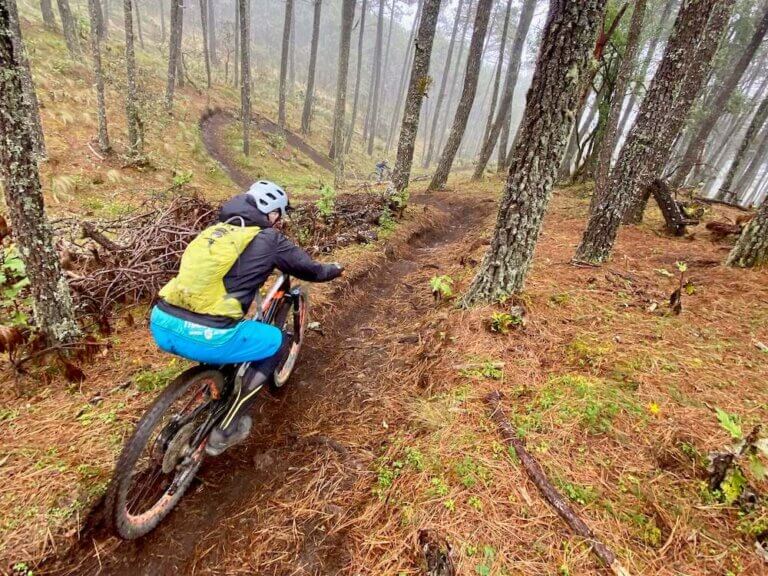


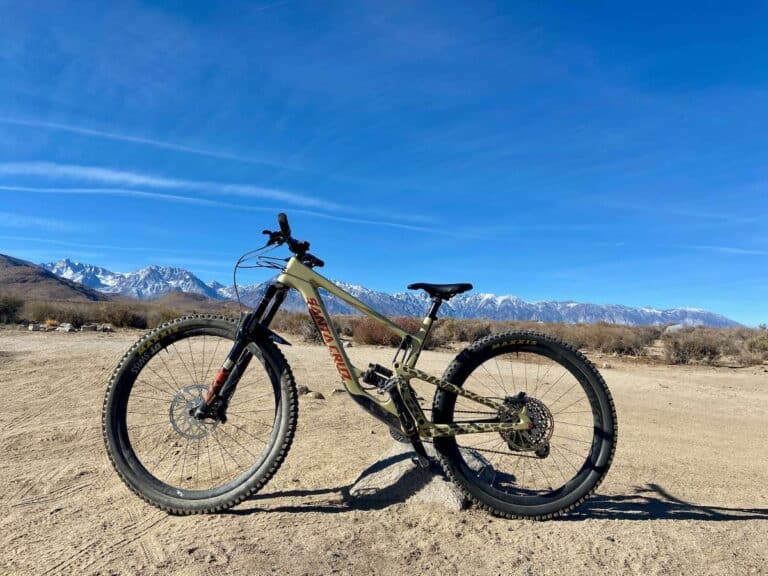
Thanks for your informative article. I think I will keep following more of your posts.
Moving your bike, whether to a new home or city, is a breeze when you know how to use a roof rack.
I’m worried about other commuters possibly hitting my ride, so I think roof-mounted might be the best option.
That is definitely a consideration
Not all racks fit any vehicle. Roof-mounted types are probably nice, but even these require crossbars that not all cars have.
I was wondering if you had the chance to try the Arvika bike rack? (https://arvikabikerack.com/en-us). I’ve had mine for some time now and sees a lot of blog talking about bike rack, but Arvika seems to be forgotten.
Their bike rack goes on A-Frame (travel trailer), but it can also be mounted on a hitch. They have this hitch adapter, so it’s possible for me to take the same bike rack on my travel trailer and my car. Pretty solide, no problem so far with it and i’m able to bring 4 bikes with it!
I hadn’t heard of the Arvika bike rack before. I’ll check them out!
Good review.
Glad ReKKKon was sold, I didn’t like the owner for his political views and I vote with my dollar.
Other really good vertical racks that hold more than mtn bikes is VelociRAX. Similar to the Recon, but better. I have the Northshore and it’s been great, but it does cause fork rub and the front tires spin, which I would think causes bearing wear, plus it’s distracting. I used a bungie running through the spokes to stop that, so easy fix. You can’t get a road bike on it unless you flip it backwards and use two spots, so it is doable.
For tray style, QuikR (https://quikrstuff.com/) is a newish brand by the guy who started OneUP, so it’s the same only better. I just recently got mine and it’s worth the money. Very high quality. Compact storage design. Love it.
Thanks for your input, Troy! I have heard of the VelociRAX, but just don’t know too much about them. Never heard of QuikR – I’ll check them out. Thanks!